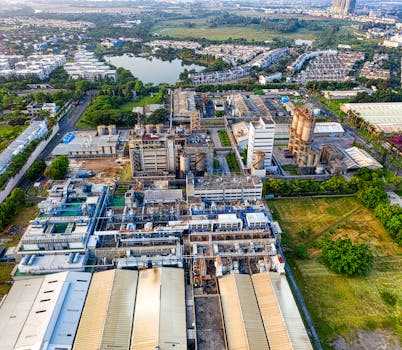
**
India's quest for rare earth independence is a crucial endeavor, impacting its technological advancement, economic security, and geopolitical standing. Rare earth elements (REEs), vital components in various high-tech applications, from smartphones to defense systems, currently dominate global supply chains, with China holding a significant share. India, aiming to break this dependence, faces three critical hurdles in its pursuit of self-reliance in rare earth mining, processing, and refining. This article delves into these challenges, examining the obstacles and potential solutions.
1. Limited Domestic Resources and Exploration Gaps: Unearthing India's REE Potential
One of the most significant impediments to India's rare earth independence is the relatively limited known reserves compared to global giants like China and Australia. While India possesses rare earth deposits, their extent and economic viability remain largely unexplored. This lack of comprehensive geological surveys and advanced exploration techniques hampers accurate assessment of REE resources. The current exploration efforts are insufficient to meet the burgeoning demand fueled by India's ambitious technological growth plans.
Challenges in Exploration and Mining:
- Technological Limitations: The extraction of REEs is technologically complex and requires advanced expertise and equipment. India needs significant investment in cutting-edge technologies for efficient and environmentally responsible mining.
- Geographic Accessibility: Many potential REE deposits are located in remote and challenging terrains, posing logistical and infrastructural hurdles to exploration and extraction. This adds significant costs to the entire process.
- Environmental Concerns: REE mining carries environmental risks, including soil erosion, water pollution, and habitat destruction. Striking a balance between economic development and environmental sustainability is crucial.
Strategies for Overcoming the Resource Gap:
- Increased Investment in Geological Surveys: Prioritizing comprehensive geological surveys, leveraging advanced technologies like hyperspectral imaging and artificial intelligence, is critical to identify and assess the full extent of India's REE potential.
- Collaborations and Technology Transfer: International collaborations with countries possessing advanced REE exploration and mining technologies can accelerate India's progress. Technology transfer agreements and joint ventures can significantly enhance capabilities.
- Sustainable Mining Practices: Adopting sustainable mining practices, minimizing environmental impact, and ensuring responsible resource management are essential for long-term REE development.
2. Technological Bottlenecks in Processing and Refining: Bridging the Value Chain Gap
Even with sufficient domestic resources, India faces significant technological hurdles in processing and refining REEs. These processes are complex and require specialized expertise and advanced facilities. China currently dominates the global REE processing and refining market, controlling the crucial downstream value chain. This technological dependence weakens India's ability to leverage its own REE resources fully.
Technological Challenges in Processing and Refining:
- Lack of Sophisticated Infrastructure: India lacks sufficient infrastructure for large-scale REE processing and refining. Building this infrastructure requires substantial investment and expertise.
- Limited Skilled Workforce: The specialized skills required for REE processing and refining are scarce in India. Training and development programs are essential to bridge this skills gap.
- Environmental Regulations and Compliance: Stringent environmental regulations governing REE processing and refining necessitate investment in pollution control technologies and adherence to global best practices.
Strategies for Overcoming Technological Bottlenecks:
- Investing in R&D and Innovation: Increased investment in research and development is crucial to develop indigenous technologies for REE processing and refining. This includes fostering innovation in areas such as hydrometallurgy and solvent extraction.
- Promoting Public-Private Partnerships: Public-private partnerships can accelerate the development of processing and refining facilities by leveraging the expertise and resources of both sectors.
- Skill Development Programs: Comprehensive skill development programs aimed at training a skilled workforce are critical for ensuring efficient and sustainable REE processing and refining operations.
3. Economic Viability and Market Competition: Ensuring Competitive Advantage
The economic viability of India's rare earth industry is a key concern. The high capital investment required for exploration, mining, processing, and refining, combined with international competition, presents challenges. Ensuring the economic competitiveness of India's REE sector is vital for achieving self-reliance.
Economic Challenges and Competitive Pressures:
- High Production Costs: The high costs associated with REE mining, processing, and refining can make Indian REE products less competitive in the global market.
- Global Market Dynamics: Fluctuations in global REE prices and intense competition from established producers pose significant economic risks.
- Lack of downstream industries: The absence of a well-developed downstream industry to utilize the processed REEs limits the economic viability of the entire value chain.
Strategies for Ensuring Economic Viability:
- Government Support and Subsidies: Targeted government support, including subsidies and incentives, can make the REE industry more economically attractive to investors.
- Developing Downstream Industries: Investing in developing downstream industries that consume REEs, such as the electric vehicle and renewable energy sectors, is crucial to create a robust domestic market.
- Strategic Partnerships and Market Access: Strategic partnerships with international companies can facilitate access to global markets and reduce economic risks.
India's pursuit of rare earth independence is a long-term strategic objective requiring a multi-faceted approach. Addressing the challenges of limited resources, technological bottlenecks, and economic viability necessitates significant investment, technological innovation, and policy support. By overcoming these hurdles, India can secure its future in critical technologies and strengthen its global position in the rapidly evolving landscape of rare earth elements. The successful implementation of these strategies will be vital for realizing India's rare earth ambitions and achieving true self-reliance in this crucial sector.



















